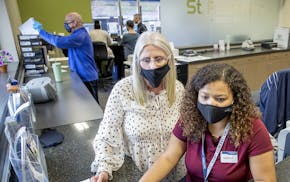HOW TO SAVE ON ORGANICS
Start slowly and build. Many consumers start by trying organic milk or produce at first and then move to meats and canned goods. Choose produce only from the "most contaminated" list and buy conventional from the "least contaminated."
Select private-label brands at larger stores, including Cub (Wild Harvest), Rainbow (Roundy's), Whole Foods (365) and Trader Joe's. Save up to 30 percent.
Shop at farmers' markets. Talk with growers whose crops are locally grown. Some foods may not be certified organic, but the farmer might have spurned pesticides or chemical fertilizers.
Join a CSA (Community Supported Agriculture). Area farmers provide weekly seasonal produce from spring to fall for $300 to $600 at metro-area dropoff sites, as well as home delivery. To find a grower, go to www.land stewardshipproject.org or call 651-653-0618, www.mda.state.mn.us/food/minnesotagrown/ or call 1-800-657-3878. Act quickly; some farms are already at order capacity for 2008.
Buy in season in large amounts. You don't have to be a canner, either. Use a food processor and then store the food in gallon-sized resealable plastic bags.
Buy what's on sale and in season. Strawberries have been on sale recently; apples have not.
Check for coupon circulars at stores. Cub and Rainbow offer the "Go Organic" coupon booklet with more than $18 in coupons. Co-ops such as Mississippi Market, Lakewinds Natural, Linden Hills, the Wedge and Seward offer the free Co-op Advantage Savings booklets in their stores.
Buy a Blue Sky Guide ($20). The guide has more than 50 grocery coupons, mostly for local co-ops but also a $5 coupon at Lunds and Byerly's with a purchase of $50 or more. Some retailers are discounting the guide to $15. The guide is available at most co-ops and health food stores.
JOHN EWOLDT

Hy-Vee reloads with wine tasting bar, cigar humidor and a DSW shoes area

As the Twin Cities supermarket battle heats up, who is No. 1?

How to earn up to 5% interest on a Minnesota checking account

In early evening, businesses in the Twin Cities scramble to close down


